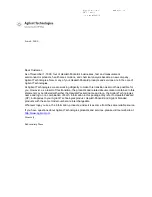
15
OPERATING PRINCIPLES
For You Technical Types.
WHISTLER inverters work in two stages. During the first stage, the
DC to DC converter increases the DC input voltage from the power
source (e.g. a 12 volt battery) to 145 volts DC. In the second stage,
the high voltage DC is converted to 115 volts (60 Hz AC) using
advanced power MOSFET transistors in a full bridge configuration.
The result is excellent overload capability and the capacity to
operate difficult reactive loads. The output waveform resulting from
these conversions is a “quasi-sine wave” or a “modified sine wave”
as shown on below.
This stepped waveform is similar to the power generated by utilities
and has a broad range of applications.
The modified sine wave produced by the Inverter
The modified sine wave produced by your Whistler inverter has a
root mean square (RMS) voltage of 115 volts.
The majority of AC voltmeters measure RMS voltage and assume
that the measured waveform will be a pure sine wave.











































